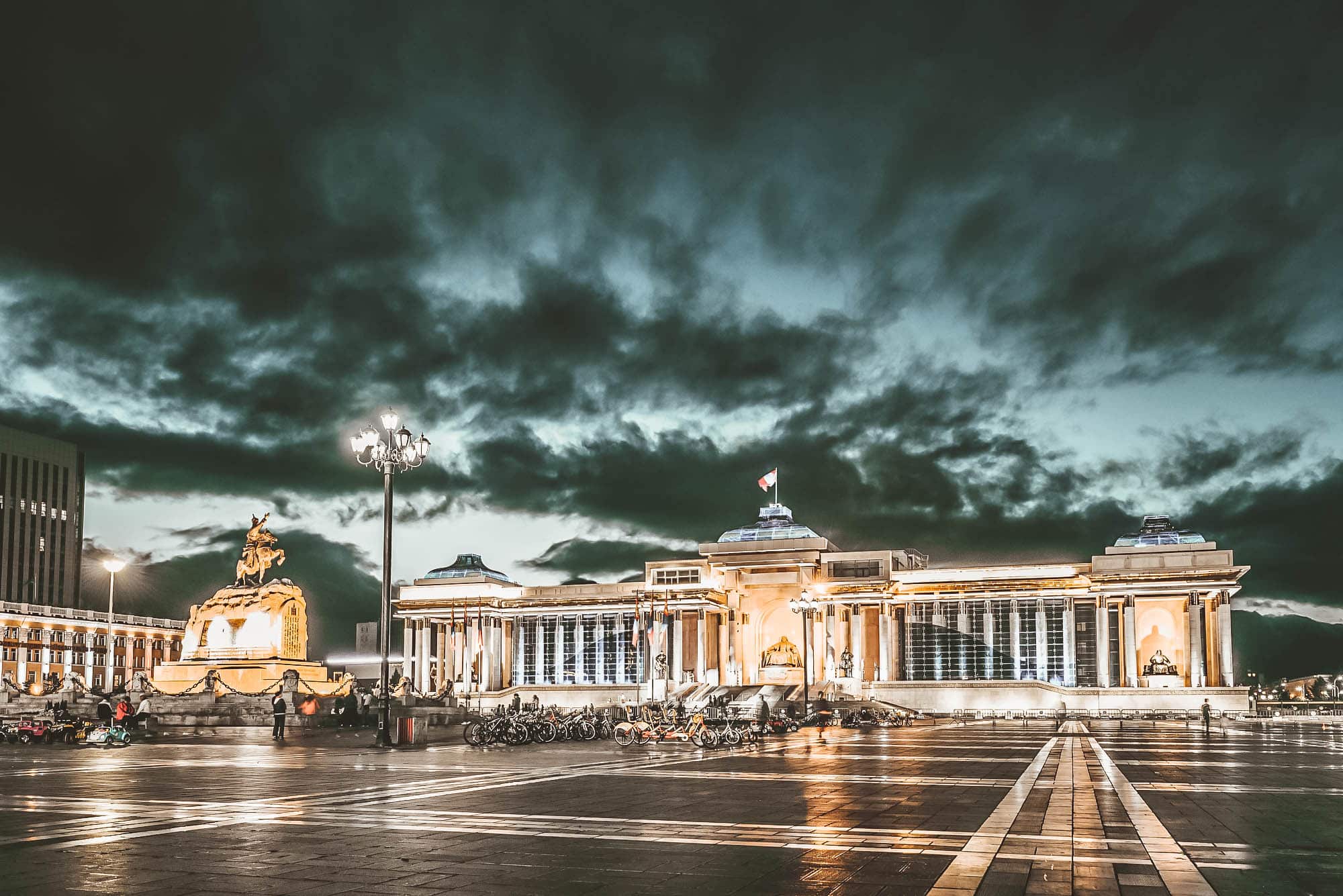- Home
- Ulaanbaatar
The first recorded capital city of the recent Mongolian empire was created in 1,639. It was called Örgöö and was originally located at the monastery of Da Khuree, some 420km from Ulaanbaatar in Arkhangai aimag (province). The monastery was the residence of five-year-old Zanabazar who, at the time, had been proclaimed the head of Buddhism in Mongolia. Because it consisted of felt tents, the ‘city’ was easily transported when the grass went dry. Some 25 movements were recorded along the Orkhon, Selenge and Tuul Gols (rivers). Throughout such movement, the city was given some fairly unexciting official and unofficial names, including Khuree (Camp) in 1,706. In 1,778 Khuree was erected at its present location (GPS: N47° 55.056’, E106° 55.007’) and called the City of Felt. Later, the city became known as Ikh Khuree (Great Camp), and was under the rule of the Bogd Gegeen, or Living Buddha. The Manchus, however, used Uliastai as the administrative capital of Outer Mongolia. In 1,911 when Mongolia first proclaimed its independence from China, the city became the capital of Outer Mongolia and was renamed Niislel Khuree (Capital Camp). In 1,918 it was invaded by the Chinese and three years later by the Russians. Finally, in 1,924 the city was renamed Ulaanbaatar (Red Hero), in honour of the communist triumph, and declared the official capital of an ‘independent’ Mongolia (independent from China, not from the Soviet Union). The khangard (garuda), symbolising courage and honesty, was declared the city’s official symbol. In 1,933 Ulaanbaatar gained autonomy and separated from the surrounding Töv aimag. From the 1,930s, the Soviets built the city in typical Russian style: lots of ugly apartment blocks, large brightly coloured theatres and cavernous government buildings. Tragically, the Soviets also destroyed many old Russian buildings as well as Mongolian monasteries and temples. Today the city booms with new private construction projects although a comprehensive infrastructure plan has been slow to implement. It has also enjoyed cultural resurgence with lots of museums, galleries, theatre performances and clubs bringing out the best in traditional Mongolian culture.
